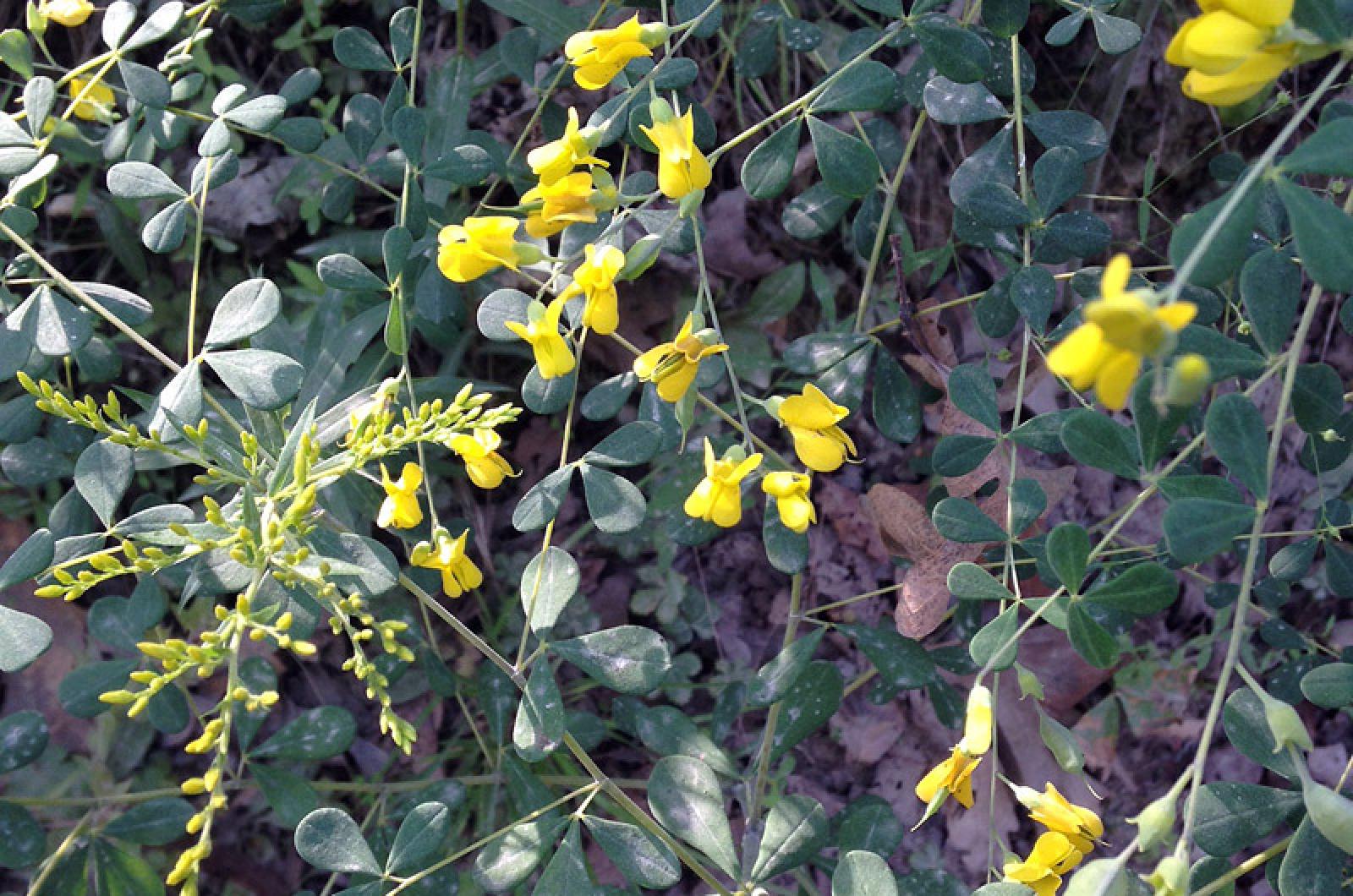It isn’t always bad to be blue.
Being blue is bringing much happiness this week. Consider the ocean blue, blue skies, blue jays and bushes of ripe blueberries!
But blue is also causing me to see yellow. Wild indigo, known for its blues, is boasting bright yellow blossoms. This full-figured herb, which shows round or globular growth, is now in flower. The state forest and Long Point Wildlife Refuge are great places to see these buttery blooms in their golden glory.
Baptisia tinctoria is the scientific name for this plant that has long been a source for blue dye. The Greek root baptisia means to dip or dye, as does the Latin tinctus, so you get the idea that this plant was at one time popular for its use as a blue coloring agent.
However, true indigo, plants of the genus Indigofera, are thought to be of far superior quality for dyeing. Even that plant gets dissed in this Chinese proverb: “Indigo blue is obtained from the indigo plant, but such color is bluer than the plant itself; the disciple has surpassed the master.”
The value of wild indigo goes beyond its tinting abilities. Its curative properties are well-known. The Creek Indians boiled Baptisia’s roots and “administered the decoction externally and internally to children who seemed drowsy and lifeless and on the point of becoming sick.”
Other herbalists knew that wild indigo was effective in treating issues of a gastrointestinal and/or respiratory nature. One medicine man insisted “that in whatever condition the patient complains of difficult respiration, where the lungs feel compressed, where the patient cannot lie down because of fear of suffocation, if he sleeps, he has found Baptisia in small doses every hour positively curative.” Others laud this plant’s ability to counteract “gangrenous and other ill-conditioned sores due to debilitated conditions of the body.”
Hunger could also be allayed with this potent plant. Nineteenth-century naturalist and author Charles Millspaugh observed, “young shoots of this plant resemble in form and general appearance those of asparagus and are used, especially in New England, in lieu of that herb for a pottage.”
Even horses enjoyed and employed wild indigo. Henry David Thoreau explained the names indigo and horsefly weed this way, “I do not know whether the practice of putting indigo-weed about horse’s tackling to keep off flies is well founded, but I hope it is for I have been pleased to notice that whenever I have occasion to tie a horse I am sure to find indigo weed not far off, and therefor this, which is so universally dispersed, would be the fittest weed for this purpose.”
After a life of such usefulness, wild indigo will not cease to entertain. Its dried seeds shake and rattle in their pods. Next, the plant will break off at its main stem and have a rollicking good time rolling about the fields like tumbleweeds.
Thus, it’s indigo on the go: anything to spread these summertime blues, I suppose. They will eventually settle down and germinate to get ready for next year, when once again they can show their true colors.
Suzan Bellincampi is director of the Felix Neck Wildlife Sanctuary in Edgartown, and author of Martha’s Vineyard: A Field Guide to Island Nature.






Comments
Comment policy »